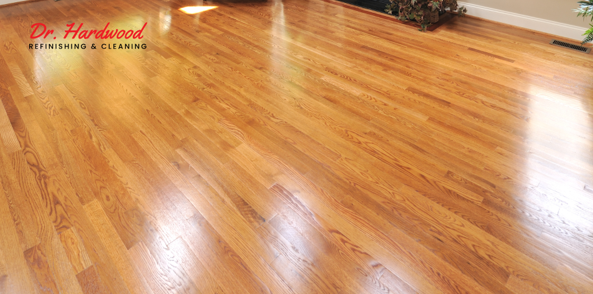A Guide to Preserving Hardwood Floors in Austin, Texas

Hardwood floors add beauty and value to any property but can lose their luster due to scuffs and scratches. A complete refinishing isn’t always needed.
Instead, a more efficient process called hardwood floor screening and recoating can restore the floor’s protective layer and shine.
This article explores the benefits of this procedure for Austin residents and provides guidance on when it is the right solution.
For those in Austin seeking professional expertise, the specialists at Dr. Hardwood Refinishing & Cleaning can assist.
Understanding Hardwood Floor Screening and Recoating
The concept of hardwood floor screening and recoating is a proactive maintenance approach.
It is designed to treat the top protective layer of the floor, not the wood itself. The process begins with “screening,” a light buffing of the surface with a fine-grit screen to remove minor imperfections and create a texture for a new finish to bond effectively.
Once the floor is thoroughly cleaned of dust, a fresh coat of polyurethane is professionally applied.
This new layer bonds with the abraded surface, creating a renewed, durable barrier that brings back the floor’s original brilliance.
Key Indicators for a Recoat
Assessing whether hardwood floor screening and recoating is the right service is a vital first step. It is best for floors with signs of minor, superficial wear, while a full refinishing is required for floors with deeper damage.
These common signs can determine a floor’s readiness for recoating:
- Dullness or Lack of Sheen: The floor has lost its shine and appears flat, even after cleaning. This indicates the original finish is wearing thin.
- Minor Surface Scratches: Light, hairline scratches are visible but do not penetrate the finish into the wood itself.
- Uniform Wear: The floor shows consistent, widespread wear across its entire surface, which is typical in high-traffic areas.
- Discoloration and Fading: Minor surface discoloration or faded areas can often be corrected with a new finish.
If the floor has deep gouges, significant water damage, or exposed wood, a full refinishing is likely necessary.
The Efficient Recoating Process
One of the most significant advantages of hardwood floor screening and recoating is the efficiency of the project. The entire process is designed to minimize disruption and can typically be completed in a single day.
The steps a professional will follow are simple yet precise:
- Preparation: The floor is thoroughly cleaned to remove all dirt and residue, ensuring proper adhesion of the new finish.
- Screening: A professional uses a buffer with a screen attachment to lightly scuff the surface, preparing it for the new coat.
- Application of Recoat: With the floor clean and prepped, a thin, uniform layer of high-quality polyurethane finish is applied. The new coat dries quickly, allowing for a fast return to normal use.
The Substantial Benefits of Choosing a Recoat
For Austin property owners, choosing to recoat their hardwood floors offers several tangible benefits:
- Significant Cost Savings: The cost is a fraction of a full refinishing, making it a budget-friendly solution for floor maintenance.
- Time-Efficient: The entire process takes only a day, with quick drying times that minimize disruption.
- Minimal Disruption: The process is virtually dust-free and odor-free, eliminating the need for extensive cleanup or temporary relocation.
- Extended Floor Lifespan: By regularly applying a new protective layer, a recoat helps prevent minor surface wear from escalating into major damage, extending the life of the floor.
FAQs about Hardwood Floor Screening and Recoating
What is the difference between screening and a full refinish?
Screening and recoating addresses surface-level wear by lightly abrading the existing finish and applying a new protective coat. A full refinish, in contrast, involves sanding the floors down to the bare wood to remove deep scratches and imperfections before applying a new stain and finish.
How often should I recoat my hardwood floors?
For floors in a typical residential setting, a recoat is recommended every three to five years. For high-traffic commercial spaces, a recoat may be needed annually to maintain a pristine appearance and protect the floors from accelerated wear.
How long does the entire process take?
A professional screening and recoating project is typically finished in a single day. The new finish typically dries to the touch in just a few hours, and the floor can be used with light traffic in 24 hours.
How do I maintain my floors after a recoat?
After a recoat, it is important to use a hardwood floor-specific cleaner. Avoid using wax-based cleaners, which can leave a residue, and steer clear of steam mops, which can damage the finish over time.
Regular sweeping and mopping are the best ways to keep the new finish looking its best.
A Smart Investment in Your Austin Property
Maintaining the condition of hardwood floors is a wise investment, as they are a valuable asset.
Hardwood floor screening and recoating provides a cost-effective and convenient way to restore a floor’s beauty and protection without the time and expense of a full refinish.
It is the perfect solution for floors that have lost their shine but have not yet sustained deep, structural damage.
By choosing this process, homeowners and business owners can preserve their floors and ensure their property continues to look its best for years to come.
For professional consultation and expert hardwood floor screening and recoating services in Austin, property owners can contact Dr. Hardwood Refinishing & Cleaning.
read more : Renovation Guide: Upgrading Your Roof for Increased Home Value





